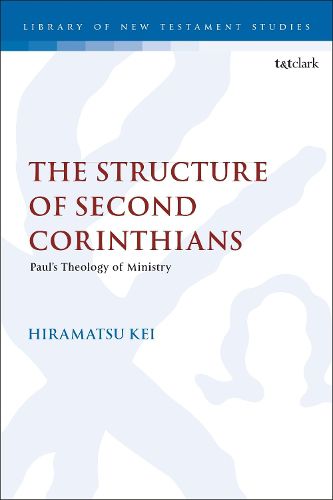Readings Newsletter
Become a Readings Member to make your shopping experience even easier.
Sign in or sign up for free!
You’re not far away from qualifying for FREE standard shipping within Australia
You’ve qualified for FREE standard shipping within Australia
The cart is loading…






Hiramatsu Kei examines the literary structure of 2 Corinthians and how it can illuminate understanding of this Pauline letter and its theological message. He explores the theoretical foundations of Inductive Bible Study as an approach, which focuses on the meaning of biblical texts in their final form by incorporating insights from multifarious methodologies. Based on the final form of the letter and its compositional unity, he prioritizes the literary context as consequential evidence for interpretation.
Hiramatsu argues that there are two major components of the literary structure: the division of the letter and the identification of major structural relationships within and between the divided parts. Thus, he proposes that 2 Corinthians consists of seven major segments which coherently develop Paul's discourse pertaining to ministry, and discusses the implications regarding his theology of theocentric ministry and that of weakness that arise from a literary investigation. Hiramatsu demonstrates that an inductive and integrative approach not only presents a more suitable and helpful literary structure for 2 Corinthians, but also illustrates the relevance of such study when seeking to gain understanding of the theological implications of the letter.
$9.00 standard shipping within Australia
FREE standard shipping within Australia for orders over $100.00
Express & International shipping calculated at checkout
Hiramatsu Kei examines the literary structure of 2 Corinthians and how it can illuminate understanding of this Pauline letter and its theological message. He explores the theoretical foundations of Inductive Bible Study as an approach, which focuses on the meaning of biblical texts in their final form by incorporating insights from multifarious methodologies. Based on the final form of the letter and its compositional unity, he prioritizes the literary context as consequential evidence for interpretation.
Hiramatsu argues that there are two major components of the literary structure: the division of the letter and the identification of major structural relationships within and between the divided parts. Thus, he proposes that 2 Corinthians consists of seven major segments which coherently develop Paul's discourse pertaining to ministry, and discusses the implications regarding his theology of theocentric ministry and that of weakness that arise from a literary investigation. Hiramatsu demonstrates that an inductive and integrative approach not only presents a more suitable and helpful literary structure for 2 Corinthians, but also illustrates the relevance of such study when seeking to gain understanding of the theological implications of the letter.